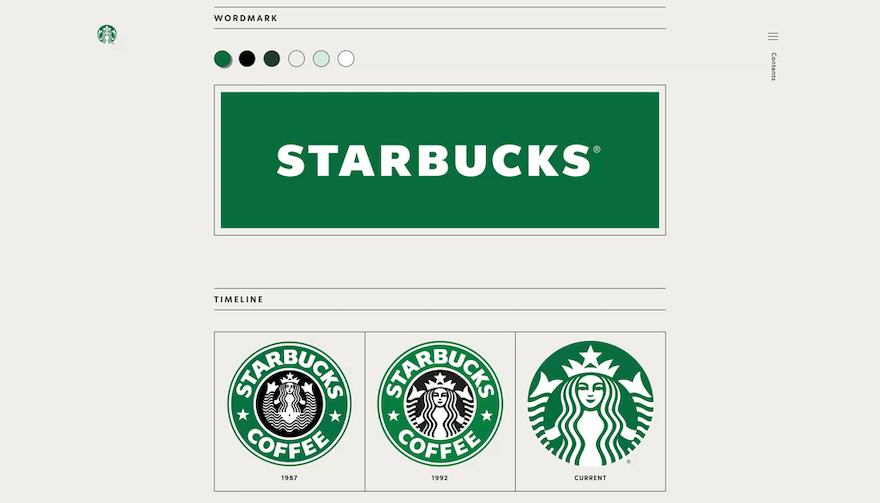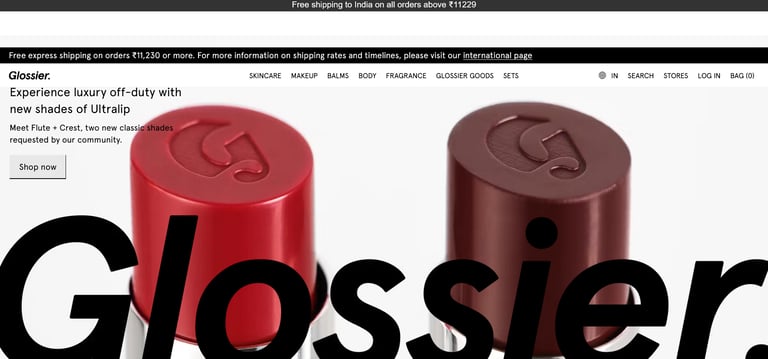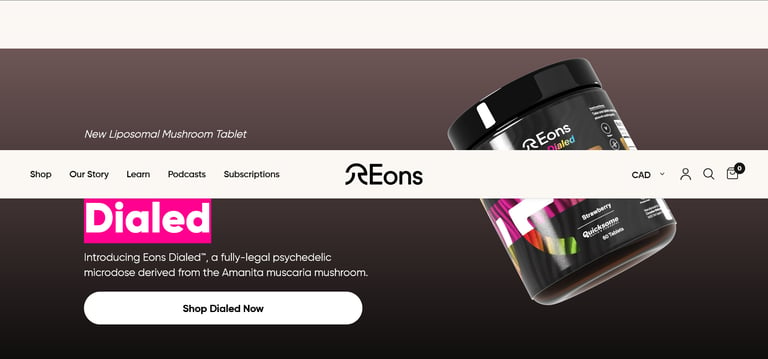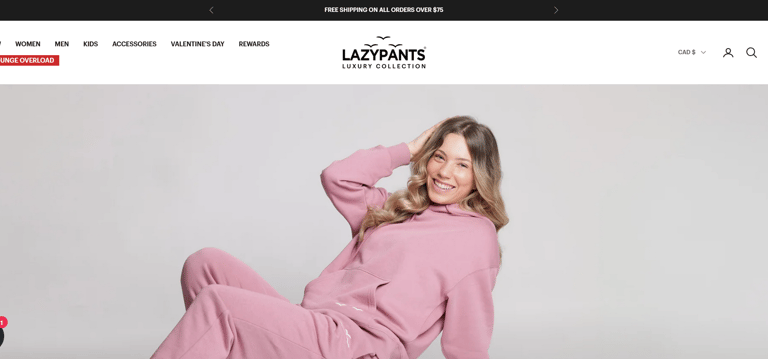
Brand Development
Create Trust. Build Consistency. Develop Values.
We guide you through the thoughtful process of defining your brand’s identity, its purpose, and the emotional connection it must forge to stand out in an oversaturated, crowded market.
Brand development is the process of creating and strengthening your brand. It's about defining who you are, what you stand for, and how you want to be perceived.
A brand is not just a logo or a catchy name.
It's the entire experience your customers have with your business.
It's what people say about your brand when you're not in the room.
A strong brand is built on trust, consistency, and a clear identity.
It's your promise to your customers and the values you stand for.


Brand Blinks Global
9 Pillar Coverage.
BRAND BLINKS
<html>
<head>
<title>Brand Blinks</title>
<script type="application/ld+json">
{
"@context" : "https://schema.org",
"@type" : "WebSite",
"name" : "Brand Blinks",
"url" : "https://www.brandblinks.com/"
}
</script>
</head>
<body>
</body>
</html>
Brand Strategy.
Brand Consultation.
Website Design / Dev.
Content & Messaging.
Brand Guidelines.
Brand Experience.
Brand Systems.
Brand Identity.
Scalability & Vision.
The lasting impression, the reputation, and the emotional connection your business creates. This is your brand.
It’s the conversation happening about it, even when you’re not around.
+ Struggling to gain or sustain customer trust?
+ Finding it hard to stand out in a noisy market?
+ Losing touch with what makes your business unique?
The Foundation of a Strong Modern Brand.
Why Brand Development Matters Today.
Why Your Business Needs Brand Development.
It attracts new customers and nurtures existing relationships.
A strong brand helps your customers instantly recognise and choose your products or services.
It builds trust through consistent, reliable experiences that keep people coming back.
It positions your business as distinct and memorable among competitors.
A well-thought-out brand can command higher prices and boost your overall business value.
How we build your Brand?
Core 6-Steps to Brand Development
1.
Research your target market.
Building a successful brand starts with understanding your market, knowing who your potential customers and competitors are. His foundational step informs every aspect of your brand strategy and business plan.
Why Market Research Matters
Before designing a logo or developing a brand personality, it's crucial to grasp your audience's preferences and the competitive landscape.his understanding ensures your brand resonates with your target market and stands out from competitors.
1. Analyze Competitors Online
Search for your product or service category on Google to identify direct and indirect competitors. Examine their offerings, branding, and customer reviews to understand their strengths and weaknesses.
2. Engage with Your Target Audience
Interact with individuals who represent your ideal customers. Inquire about the brands they prefer in your industry and the reasons behind their choices.
3. Explore Relevant Social Media
Observe the social media accounts and pages your target audience follows. Pay attention to the content they engage with and the language they use.
4. Experience the Customer Journey
Visit online and physical stores to see how your potential customers browse and purchase products. This firsthand experience can provide valuable insights into consumer behavior.
5. Stay Informed on Industry Trends
Read industry publications, monitor social media discussions, and utilize tools like Google Trends to keep abreast of current market trends and consumer interests.
Identifying Your Unique Selling Proposition (USP)
As you research, take note of the leading brands in your market. Assess what they excel at and identify gaps that your brand can fill. This analysis will help you define your USP, the distinctive benefit that sets your brand apart from competitors.
Understanding Your Audience's Habits
Pay close attention to the platforms your target audience frequents, the terminology they use, and their interactions with other brands. These insights will guide you in reaching them effectively and crafting messages that resonate.
2.
Determine your brand’s voice and personality.
Developing a strong point of view (POV) is essential for effective branding. It ensures your brand resonates with your target audience by clearly communicating who you are and what you stand for. A key exercise in establishing this POV is creating a positioning statement.
What Is a Positioning Statement?
A positioning statement is a concise description that defines your product or service, identifies your target market, and highlights what makes you unique. While primarily for internal use, it guides your brand's messaging and strategy.
Crafting Your Positioning Statement
To develop a clear and compelling positioning statement, consider the following template:
"For [target customer] who [need or desire], [product/service name] is a [product/service category] that [key benefit]. Unlike [primary competitor], we [unique differentiator]."
Example:
"For busy professionals who need healthy meal options, QuickEats is a meal delivery service that offers nutritious, ready-to-eat meals. Unlike other meal services, we provide customizable menus tailored to individual dietary preferences."
Benefits of a Positioning Statement
Clarity: Provides a clear understanding of your brand's purpose and value.
Consistency: Ensures uniform messaging across all marketing channels.
Differentiation: Highlights what sets your brand apart from competitors.
Brainstorm using word association
Imagine your brand as a person. What are they like? Do they have the kind of personality your customers would be attracted to? Describe this person. How can your description translate from a person to a brand?
Fashion branding expert Joey Ng suggests narrowing your list of adjectives down to just three of the best words. “Find your niche and define in very few words what makes your brand distinctive,” she says. “If something doesn’t fit those original three words—even though you might like it—scrap it. Establish the core message, nail it, then expand.”
Hone your brand voice and tone
Your brand voice and tone will help you hone in on how you want to sound to customers and what you want them to feel when they interact with you. Is your voice cheeky or serious? Does it aim to be a reliable friend, a muse, or a trusted expert?
3.
Choose your business name.
Your company’s name is probably one of the first big commitments you’ll make as a business owner. Ideally, you want a brand name that isn’t being used by another company (especially in your industry), has available social media handles, and is a fit based on your brand or products. It should be easy to remember and hard to imitate.
A few approaches to choosing a brand name include the following:
Make up a brand new word (e.g., Pepsi).
Reframe a word unrelated to your industry or product (e.g., Apple for computers or Maple for health care).
Use a suggestive word or metaphor (e.g., Buffer).
Describe it literally (e.g., The Shoe Company or Home Depot).
Alter a word by changing its spelling, removing letters, adding letters, or using Latin endings (e.g., Tumblr or Activia).
Create an acronym from a longer name (e.g., HBO for Home Box Office).
Use a portmanteau: Pinterest (pin + interest) or Snapple (snappy + apple).
Use your name (e.g., Donna Karan or DKNY)
If your first choice domain name isn’t available for your brand (e.g., yourbrandname.com), consider other ways to snag a domain name that works. For example, lingerie company Pepper’s domain name is wearpepper.com. You can also play with the top-level domain. Try a localized version like .co.uk or .ca.
4.
Research your target market.
Your brand story is the autobiography of your business and sometimes your own story as a founder. It’s a useful tool for branding because it humanizes your business to create meaningful connections with customers.
Buyer trends point to an appetite for meaningful relationships with brands. A compelling, transparent, and authentic story is the best way to do this.
What elements of your story will resonate with your target audience? What do they need to know to connect with you as a person? How do you wrap your brand values and mission into your story to tell customers, “This is a brand for you”?
Creating a catchy slogan
Once you’ve established your positioning and your brand story, you can use this work to create a snappy slogan for your business. A good slogan is short, catchy, and makes a strong impression.
A clever slogan can increase brand awareness as customers start to recognize it—even when it’s unrelated to your brand.
Here are some ways to approach writing your slogan:
Stake your claim, like this example from Death Wish Coffee: “The World’s Strongest Coffee.”
Make it a metaphor like Red Bull did: “Red Bull gives you wings.”
Adopt your customers’ attitude, like this unforgettable slogan from Nike: “Just do it.”
Speak to your target audience, like this example from Cards Against Humanity: “A party game for horrible people.”
Try a catchy rhyme, like this Folgers coffee slogan: “The best part of waking up is Folgers in your cup.”
Establish an aesthetic or taste level, like this example from Aritzia: “Everyday luxury to elevate your world.”
5.
Create a brand style guide.
Now comes the fun part. Your style guide will include all the visual decisions you make for your brand. This guide will come in handy when you build your website, design your social media profile pages, and create product packaging.
Choosing your colors
Colors are important because, alongside copywriting, they tell potential customers how to feel about your brand. While color psychology is a contested science, there are some general associations you can make between color and mood. Moody darker cool colors may complement an edgy brand or a sleep brand while warm pastels tell a soothing story for baby or wellness brands.
Tips for choosing colors for your visual identity:
Consider how legibly white and black text will appear over your color palette.
Don’t use too many colors in your logo—it should be identifiable as a single color in black and white.
Research your target market, use focus groups, and understand the specific cultural or demographic differences that might affect a user’s perception of color.
Limit your palette to one to two main colors, with a set of accent colors that rotate in and out, depending on application.
Selecting a suite of fonts
Fonts work alongside colors to establish a recognizable look for your brand across social, your website, packaging, and other marketing materials.
As a general rule, choose two fonts: one for headings and one for body text (this might not include the font you use in your brand’s wordmark). Home brand Floof uses one sans serif font for navigation and headers and another serif font for the rest of the text. Note that its logo—a simple wordmark of its brand name—is a unique font not used anywhere else:
6.
Design your logo and brand assets.
While a logo design is one of the first things you might think of when building a brand, it should happen later in the process. That’s because it’s a critical identifier for your brand in the wild—and it’s hard to change once you’ve locked it in.
Your logo should be unique, identifiable, and scalable so it works at all sizes. It should also encompass all the work you’ve done on your brand so far. Does it invoke the feeling you hope to inspire in your customers? Does it tell a story that aligns with your brand values? Does it work in your brand colors?
Consider all the places where your brand’s logo will show up:
Website
Social media avatar
Video ads
YouTube channel banner
Browser favicon (the tiny icon that identifies your open browser tabs)
Press mentions and partnerships
You may need to create a few versions of your logo to make it work across applications. If you have a text logo, for example, it’ll be almost impossible to read as a favicon or social avatar. Create a simplified visual version of your logo that works as a square or circle.
Types of logos
Wordmarks, lettermarks, and other type-based logos are the most common type of logos for modern brands. But other styles may work better for you, depending on your goals and aesthetic.
Some logotypes include the following:
Abstract logos are a combination of shapes and colors that don’t easily tie back to anything in the real world. These are best used as a secondary logo, paired with a wordmark, while you build brand recognition.
Mascot logos are represented by the face of a character or real person you use as an ambassador for your brand. They can humanize your business by creating a relatable personality. This works best for kids’ brands or those looking for a retro feel (e.g., Wendy’s, Colonel Sanders for KFC).
Emblem logos are often circular and combine text with an emblem for a luxurious brand design. Avoid making them too fussy or they won’t scale (e.g., Polo Ralph Lauren).
Icon logos represent your brand as a visual metaphor. Unlike an abstract logo, an icon logo suggests something about the product (e.g., YouTube’s Play button logo).
Wordmarks or lettermarks are type-based logos that are either your full business name, a combination of letters, or an initial.
Brand Identity Logo examples
Because of the limitations of each logo type, you can play with a combination of styles and have a secondary or tertiary logo.
Beauty brand Glossier has a simple wordmark logo used across its website and packaging.
Mushroom-based supplement brand Eons uses a combination of a wordmark and an icon logo (a simplified mushroom shape).
Lazypants also uses this approach, with a combination of wordmark and icon that can be used independently, the icon only is stitched into its garments.
Brand Strategy (30%)
Vision, Mission, and Values (10%)
Target Audience and Market Research (10%)
Brand Positioning and Differentiation (10%


Brand Identity (25%)
Logo and Visual Identity (10%)
Typography and Color Palette (5%)
Brand Voice and Messaging (5%)
Brand Guidelines (5%)
Brand Experience (20%)
Customer Service and Interaction (10%)
User Experience (UX) Design (5%)
Packaging and Product Design (5%)
Marketing and Communication (15%)
Content Marketing (5%)
Social Media Strategy (5%)
Advertising and Promotions (5%)






Brand Monitoring and Management (10%)
Reputation Management (5%)
Performance Metrics and Analytics (5%)



Schedule a Meet


© 2025 BRNDXMORPH Media Worldwide Private Limited. All rights reserved
Brand Blinks Global® | BBG is an independent global brand consulting and transformation company.
The trademarks, logos, and service marks displayed on this site are the property of their respective owners.
"Brand Blinks Global®," "Brand Blinks®," "Made for the Uncommon®," and the "bd®" logo are trademarks or registered trademarks of BRNDXMORPH Media Worldwide Private Limited.
RESOURCES
INTELLIGENCE
BUSINESS
PARTNER
COVERAGE
EXPLORE
Made for the Uncommon®


When your brand grows, others rise too. 2% of your project empowers a nonprofit we back together every year.

